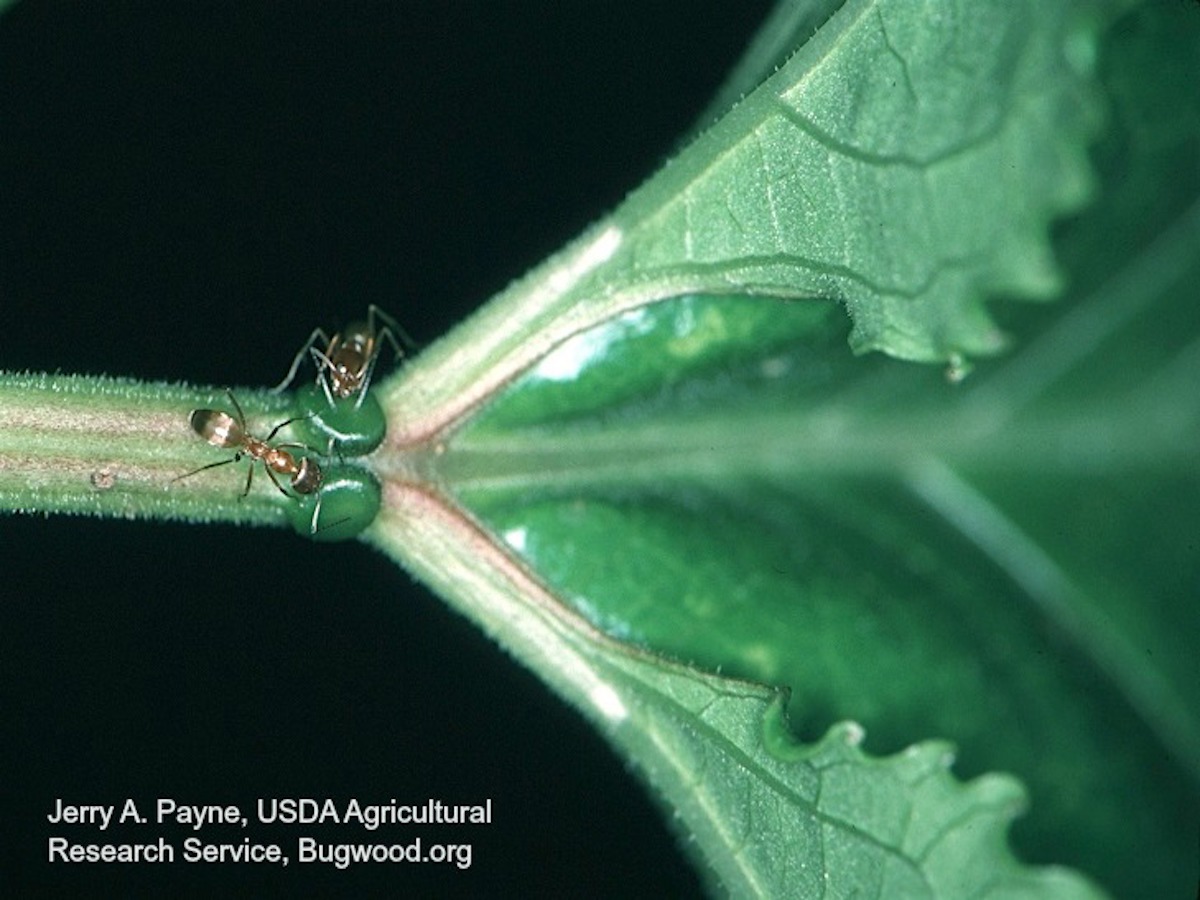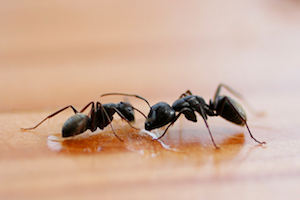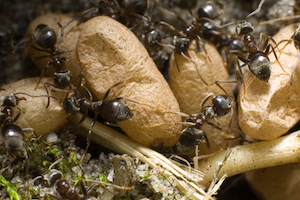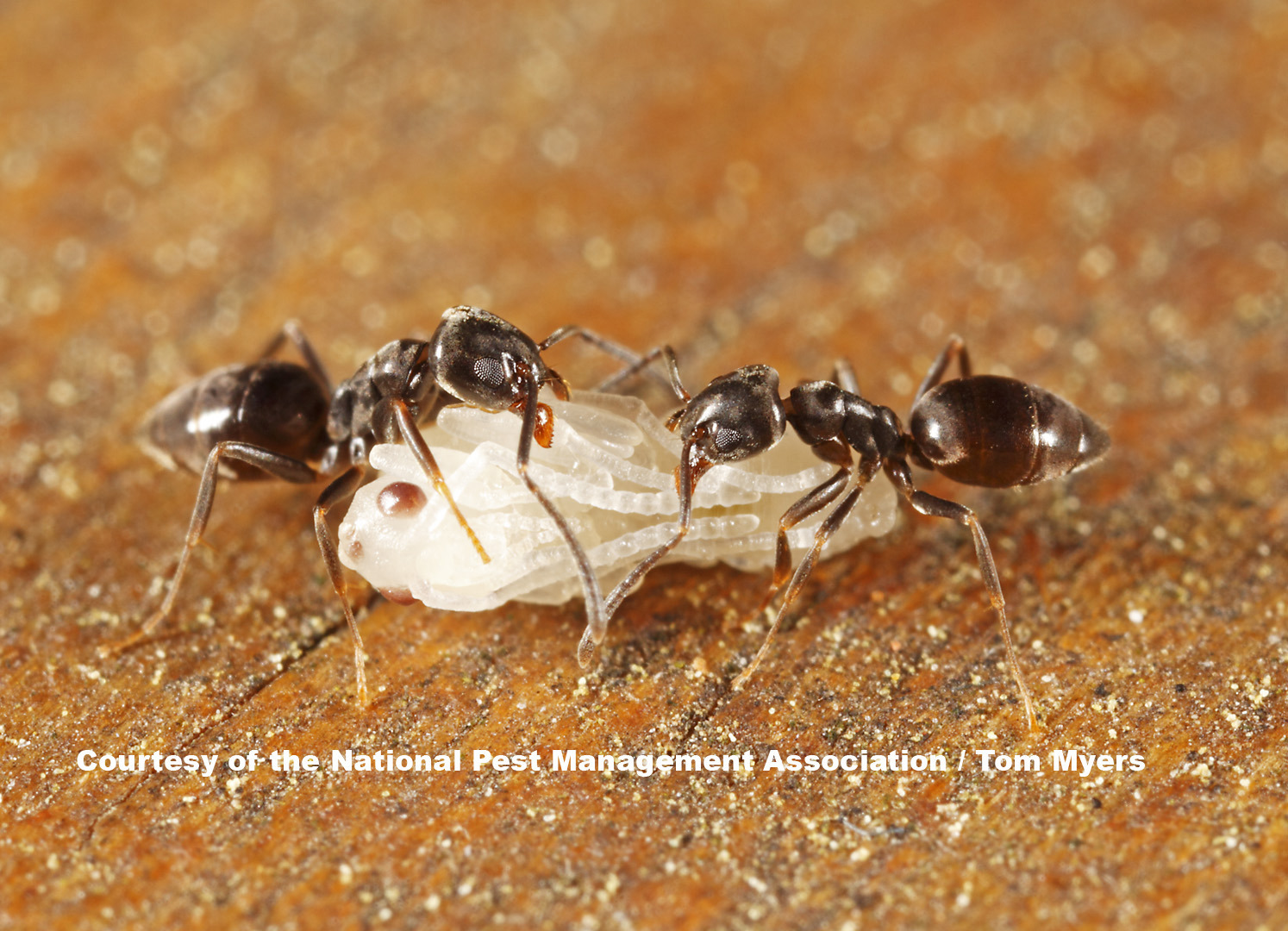Pyramid Ants Dorymyrmex spp.

Pyramid Ant Identification
Color: Head and thorax are brown to reddish black; abdomen is usually darker
Size: 1/16-1/8” (1.5-3 mm)
Legs: Six
Antennae: Yes
Shape: Segmented; thorax with pyramid-like elevation of top surface towards rear
Region: Found throughout the United States, but are most common in the southern states
What are pyramid ants?
The pyramid ant gets its common name from the pyramid shaped structure on top of the thorax. They are found throughout the United States but are more common in southern regions. Mature pyramid ant colonies are usually small to moderate in size, each containing one or more queens and up to a few thousand individuals. When disturbed or crushed, this ant gives off a rotten-coconut odor.
What do pyramid ants look like?
Pyramid ants are roughly 1/8 in. long. Their bodies are segmented, with a pyramid shaped structure located on the top of their thorax. The pyramid ant head and thorax are brown to reddish black with a black abdomen.
Pyramid ants will bite if threatened, but are nonaggressive in nature.
Pyramid ants do not have a stinger, but workers will occasionally bite if there are perceived threats to the colony. Since they eat other insects, such as aggressive and invasive fire ants, some people consider them to actually be beneficial. However, due to their telltale diet, a large population of pyramid ants may signal that more dangerous ants are nearby as well. Additionally, although pyramid ants do not typically build nests indoors, they may enter households when foraging for sweets.
Pyramid ants usually nest in dry, open and sunny areas, such as lawns, pastures and sandy/bare areas. They can also be found underneath objects on the soil. Pyramid ant nests usually have a single entrance hole and are often built near the nests of other ant species, such as harvester ants. Mature pyramid ant colonies are usually small to moderate in size, each containing one queen and up to a few thousand individuals. Nest construction can result in cone-shaped mounds capable of ruining landscaping and making lawn care difficult. They are not known to nest indoors, but they will occasionally enter households in search of sugar-based foods. In general, pyramid ants are highly carnivorous and predacious, readily feeding on live and dead insects, including fire ants. Foragers are particularly fond of honeydew and will herd honeydew-producing insects such as aphids.
While both dead and living pyramid ants can signal an infestation, their volcano-shaped mounds will indicate the presence of a nest below ground.
To prevent pyramid ants from foraging inside, seal all possible points of entry around the house including small openings and cracks around doors and windows. If you suspect a pyramid ant infestation, contact a pest professional to inspect the foundation wall and lawn for crater-shaped mounds or bare soil in sunny areas.
You can find a certified pest professional near you with the helpful zip code search below.




